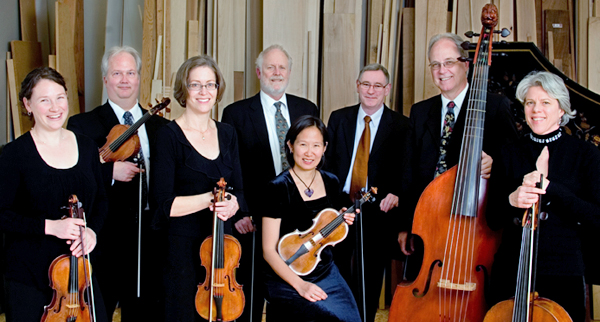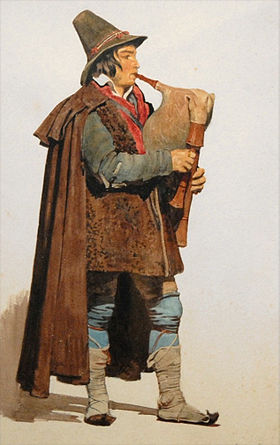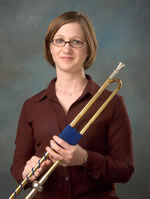Festive Music for Soprano, Trumpet, and Strings
The weekend of December 9–11, SFEMS’ holiday concert presents another in our region’s most distinguished early music groups, the dynamic Archetti Baroque String Ensemble. Archetti will be joined by exquisite soprano Clara Rottsolk and virtuoso baroque trumpeter Kathryn Adduci for a festive program of holiday music. Colorful baroque concertos and cantatas by Handel, Alessandro Scarlatti, Telemann, J.S. Bach, Torelli, and Manfredini celebrate the joy of the season with sparkling musical variety. Program highlights include Handel’s Let the bright Seraphim, Bach’s Jauchzet Gott in allen Landen, and a brilliant Concerto for Trumpet, Violin, Cello and Strings by Telemann. Archetti’s co-director and longtime Bay Area gambist scholar John Dornenburg discusses this music and its relation (or not) to the holiday season.

To most Western European Christians of the baroque era, the period of Advent was generally considered a time of penitence and self-reflection. Some areas even demanded fasting, and dancing and other festivities were forbidden. In the conservative city of Leipzig, for example, the church permitted a concerted cantata on only the first of the four Sundays of Advent. When the month-long period of solemnity ended on Christmas Eve, elaborate music would naturally play a major role in the celebrations. The majority of compositions intended specifically for Christmas Eve are centered on St. Luke’s famous gospel story of the shepherds who are visited by an angel and subsequently follow the star to the stable in Bethlehem. According to Italian legend the shepherds entertained the Virgin Mary and the newborn Jesus by playing on their bagpipes, or zampogni. In past centuries and continuing to the present day, the zampognari, or bagpipe-playing shepherds have come into Italian cities to play their instruments in front of every crèche in town. In the concluding recitative and aria of his Christmas cantata, Alessandro Scarlatti describes the original Bethlehem scene where the newborn child takes his first breaths “to the merry sound” of the zampogne innocenti (‘naive, or uncorrupted bagpipers’).

Italian instrumental composers are generally credited with the creation of a vocabulary of pastoral instrumental motifs for these Christmas Eve performances that eventually became the common property of all European music. These include lilting melodies in triple time (most often 6/8 or 12/8), parallel thirds of conjunct melodies, drone basses, and symmetrical phrases—exactly the same features which still dominate the music of the zampogni and pifferari (woodwind players, usually shawms). But rather than being merry and bright, most of the composed baroque pastorals are more like lullabies and are meant to evoke an idealized arcadian world of unaffected tranquility. In baroque oratorio, two well-known examples would be the Sinfonia that begins part two of J.S. Bach’s Christmas Oratorio, and the Pifa in Handel’s Messiah. Scarlatti’s cantata O Betlemme contains the pastoral motifs in both the instrumental Introduzione and in the concluding aria. These characteristics were transferred to the concerto grosso too, and most concert-goers will be familiar with Archangelo Corelli’s famous concerto “fatto per la notte di Natale” which has been widely performed and recorded. Archetti has elected to present two lesser-known but equally charming examples of the Christmas concerto in works by Giuseppe Torelli and his student Francesco Manfredini.

While our program’s music by Torelli, Manfredini, and Scarlatti are drawn directly from the Italian pastorale tradition, we have taken a page from the playbooks of Handel and J.S. Bach themselves to re-purpose works that have non-Christmas origins. In this context, it is worth remembering that the arias and choruses of the first five parts of Bach’s Christmas Oratorio were re-cast from three secular cantatas, and that Handel’s Messiah contains music derived from his early Italian secular cantatas. Thus we find Handel’s Eternal Source of Light Divine, though intended as a birthday ode to Queen Anne, has a laudatory message and an almost mystical atmosphere that seems perfectly transferable to the birth of Jesus. Likewise, the popular aria Let the bright Seraphim was originally intended to celebrate the death of Samson, yet, taken out of context, the call to the heavenly host to let their “loud uplifted Angel trumpets blow” is perfectly suited to a joyous Christmas morning.
In Bach’s cantata Jauchzet Gott in allen Landen, we are fortunate to find a text that does not relate specifically to any given feast day, and one which Bach himself noted could be used “in ogni tempo,” (‘on any occasion’). The scoring for a solo soprano, obbligato trumpet, and strings is a combination often found in Italian cantatas, and has led some writers to suggest that Bach may have been influenced by Alessandro Scarlatti’s work. It is a rare scoring in Bach’s compositions and in the German cantata repertory as a whole, and is well-suited to a festive occasion such as Christmas. The trumpet part was almost certainly written for Gottfried Reiche, Bach’s regular virtuoso trumpet player, but the elaborate soprano part has been the subject of much speculation. Female singers were prohibited from church services in Leipzig, so the most difficult arias were usually assigned to adult male altos, tenors, and basses. It is probable that Bach intended the cantata to showcase an exceptionally gifted boy, but musicologist Malcolm Boyd has proposed that the technical demands—much coloratura passagework and a range that reaches high c’’’—might suggest that it was sung by a professional castrato from the opera house in Dresden. Bach scholar Alfred Dürr wonders if the entire cantata could have originated somewhere other than Leipzig such as the court of Weißenfels for the Duke’s birthday, but there is no archival evidence to support either of these theses.

Telemann’s festive concerto for trumpet, violin, cello and strings is unusual both for its scoring and for how the composer employs those forces. Almost all the solo passage work is given to the violin, with much double stopping in both outer movements and a particularly long cadenza-like section in the third movement. The cello has only a few passages that are independent of the bass line, while the trumpet has no extended solo episodes and is silent in the middle movement. One copy of the original has been found in Dresden, and this has led some to speculate that the piece might have been written for Johann Georg Pisendel, the star violinist of the Dresden chapel and a known friend of Telemann’s. In any case, the bright and cheerful fast movements and the peaceful pastoral-like middle movement make it a perfect complement to our Christmas celebration.
SFEMS presents Archetti Baroque Strings with Kathryn Adduci and Clara Rottsalk at 8:00 p.m., Friday, December 9, at First Presbyterian Church, 1140 Cowper Street at Lincoln in Palo Alto; 7:30 p.m., Saturday, December 10, at St. John’s Presbyterian Church, 2727 College Avenue in Berkeley; and 4:00 p.m., Sunday, December 12, at First Unitarian Universalist Church, 1187 Franklin Street in San Francisco. Tickets are available online or through the SFEMS box office at 510-528-1725.












